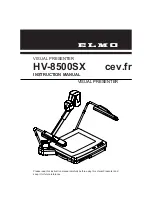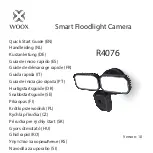
Version: 20220420
11
As a general guideline, smoke detection requires an illuminance of at least 5 lux.
Flame detection does not require light (= 0 lux). It can operate in a completely dark environment.
Dark / bright spots:
Avoid the combination of very dark and extremely bright spots in the field of view. This will stress the dynamic range
of the camera and make the image quality unstable, resulting in an overall darker image.
For indoor cameras:
•
Do not point the camera to exterior windows or portals.
•
Avoid the presence of direct light sources in the field of view. If this cannot be avoided, adjust the
detection
zone
to mask these areas out.
For outdoor cameras:
•
Avoid east or west orientation, where the sun gets low and potentially may blind the camera.
•
Avoid having horizon in the field of view of the camera at all.
Contrast:
There should be sufficient contrast in the field of view. Do not point the camera to white walls or large areas without
contrast.
Sun:
Avoid direct sunlight or bright reflections of the sun falling straight into the lens.
False triggers:
Avoid sources of dust, damp, or smoke (e.g., from operating machines) in the field of view during normal operation.
These could lead to recurring false detections.
Outdoor:
Outdoor conditions are more susceptible to false alarms. For outdoor applications, try to control and stabilize
environmental conditions as much as possible e.g., protecting the scene from varying weather conditions, apply
stable lighting conditions, apply or extend a weather shield extension, etc.
To further optimize the detection or to avoid false triggering of alarms e.g., due to very dynamic or badly illuminated
zones in the field of view, the detection can be restricted to certain zones in the field of view. These zones can be
drawn in the app configuration screen in the browser itself. Refer to the user manual on how to configure detection
zones.
By default, the detection area is the whole field of view. If detection zones are defined, this will override the default
and detection will only occur only in the defined zones.
Adjust the sensitivity parameters of FireCatcher Camera if problems persist.
CAMERA ALIGNMENT / FIELD OF VIEW
Based on the site assessment, preferably select a camera position that maximizes the visualization of potential
smoke or flames.












































